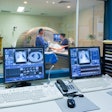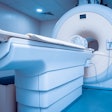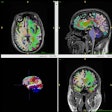A radiomics model based on pituitary MRI helps predict the presence of growth hormone deficiency (GHD) in children of "short stature" -- that is, those of height that is two standard deviations below the population mean, researchers have reported.
"[Our] interpretable radiomics-driven support vector machine model demonstrates robust diagnostic performance in predicting growth hormone levels," wrote a team led by Fukun Shi, PhD, of the First Affiliated Hospital of Henan University of Chinese Medicine, Zhengzhou, China.
Children with chronic short stature are "vulnerable to heightened risks of psychological stress that may progress to mental health disorders and impair long-term quality of life," the group noted. Reasons for the condition include GHD and idiopathic short stature (i.e., without identifying medical cause); clinicians use simulation tests consisting of sequential blood sampling to determine if GHD is the culprit. But these tests can be vulnerable to inconsistencies in sensitivity and thus may not be reliable, according to the researchers, making radiomics a potentially effective way to improve the diagnostic process.
The researchers conducted a study that included data from 340 children from three institutions. Of these, 202 made up an internal, testing/training cohort for the model (105 had GHD and 97 were of short stature), and 138 made up an external validation cohort (61 with GHD and 77 of short stature). They selected 17 radiomics features from pituitary MRI exams using SelectKBest and LASSO (Least Absolute Shrinkage and Selection Operator) and built six machine learning models. The group assessed the models' area under the receiver operating characteristic curve (AUC), sensitivity, specificity, and calibration curves.
Of the six models, two came to the top in terms of diagnostic performance: a support vector machine (SVM)-based radiomics model and an SVM-integrated clinical-radiomics model. Shi and colleagues found the following:
Diagnostic performance of two machine-learning models based on pituitary MRI data for identifying GHD among children at below average height | ||
Measure | Support vector machine (SVM)-based radiomics model | SVM-integrated clinical-radiomics model |
AUC | ||
| Training cohort | 0.88 | 0.87 |
| Testing cohort | 0.88 | 0.88 |
| External validation cohort | 0.89 | 0.89 |
Both of these models outperformed a straight clinical model, they noted, with a p-value of less than 0.001.
The findings offer two models that provide "a clinically viable, noninvasive alternative to GH stimulation test in children with short stature," the investigators concluded.
The complete study can be found here.



.fFmgij6Hin.png?auto=compress%2Cformat&fit=crop&h=100&q=70&w=100)


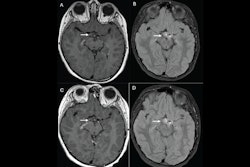

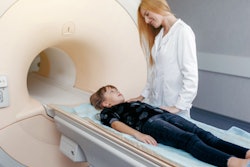
.fFmgij6Hin.png?auto=compress%2Cformat&fit=crop&h=167&q=70&w=250)








